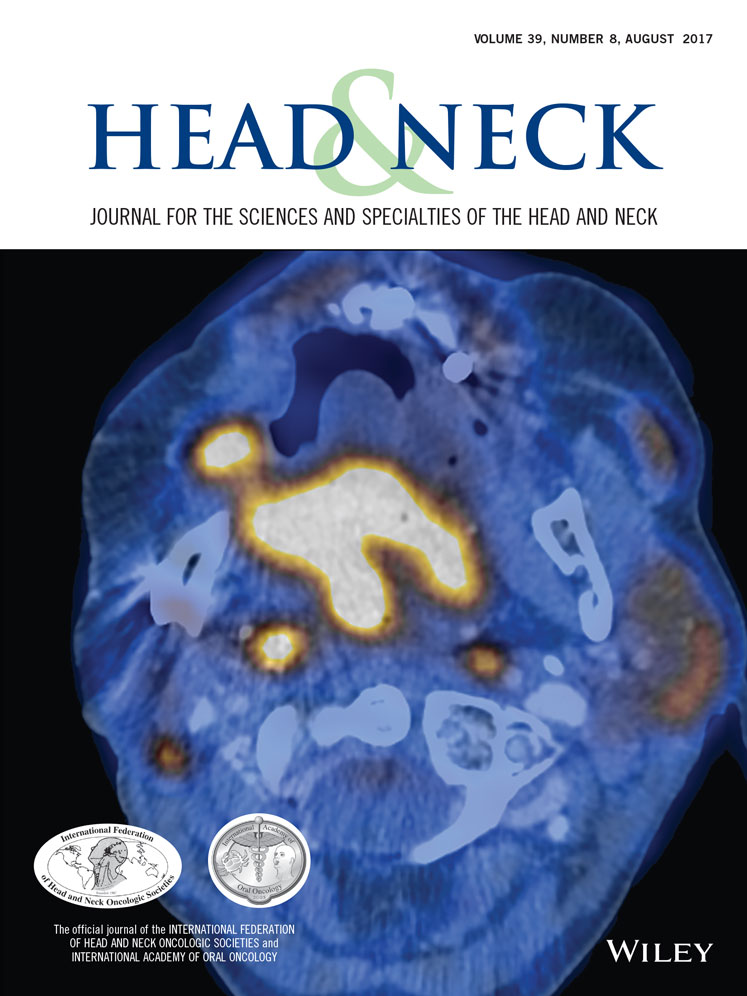Efficacy of a high-observation protocol in major head and neck cancer surgery: A prospective study
Abstract
Background
The purpose of this study was to optimize an existing clinical care pathway (CCP) for head and neck cancer with a high-observation protocol (HOP) and to determine the effect on length of intensive care unit (ICU) admission and length of stay in hospital (LOS).
Methods
The HOP mandated initiation of spontaneous breathing trials before the conclusion of the surgery, weaning of sedation, and limiting mechanical ventilation. All patients with head and neck cancer undergoing primary surgery on the HOP were compared to a historical cohort regarding length of ICU admission, ICU readmissions, and LOS.
Results
Ninety-six and 52 patients were observed in “historical” and “HOP” cohorts. The length of ICU admission (1.9 vs 1.2 days; p = .021), LOS (20.3 vs 14.1 days; p = .020), and ICU readmissions (10.4% vs 1.9%; p = .013) were significantly decreased in the “HOP” cohort.
Conclusion
Rapid weaning of sedation and limiting mechanical ventilation may contribute to a shorter length of ICU admission and LOS, as well as decreased ICU readmissions. © 2017 Wiley Periodicals, Inc. Head Neck 39: 1689–1695, 2016




